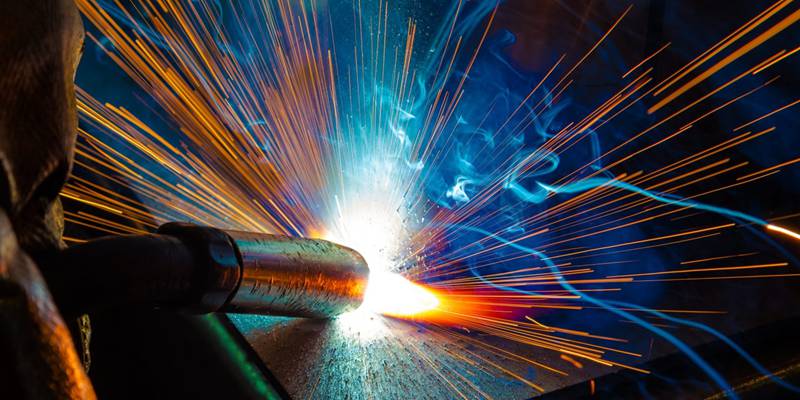Understanding Welding WPS Criteria: Best Practices and Techniques for High Quality Welds
In the world of welding, grasping Welding Treatment Spec (WPS) criteria is a vital element that straight affects the quality and stability of welds. Sticking to these requirements ensures consistency and dependability in welding results. Nevertheless, accomplishing quality in welds surpasses simply comprehending the criteria; it includes carrying out finest practices and strategies that boost the craft to a degree of accuracy and skill that sets apart the standard from the phenomenal. As we navigate via the complexities of welding WPS standards, uncovering crucial insights and approaches for attaining top-tier welds will certainly be paramount for welders seeking to master their craft and generate welds that stand the examination of time.
Recognizing Welding WPS Standards

Comprehending WPS criteria is important for assessors, welders, and engineers associated with welding procedures. By adhering to WPS standards, welders can create welds that fulfill the required mechanical buildings and structural integrity. Assessors depend on WPS paperwork to verify that welding treatments are being adhered to properly and that the resulting welds are of premium quality. Designers make use of WPS standards to develop welding procedures that guarantee the resilience and integrity of bonded frameworks.


Crucial Tools for Top Quality Welds
Mastering welding WPS requirements is vital for welders to successfully utilize the crucial devices required for generating quality welds. One of the most crucial devices for high quality welds is a welding maker. The sort of welding equipment required relies on the welding procedure being utilized, such as MIG, TIG, or stick welding. Welding helmets are additionally essential to safeguard the welder's eyes and face from stimulates, warm, and UV radiation. Furthermore, welding gloves made from resilient and heat-resistant products secure the hands from injuries and burns. Clamps and magnets help hold the work surfaces together firmly during the welding process, ensuring specific and accurate welds. Cord brushes and breaking hammers are important for cleansing the weld joint before and after welding to remove any contaminations that might influence the top quality of the weld. Lastly, a measuring tape and angle grinder work tools for making certain proper placement and preparing the work surfaces for welding.
Key Strategies for Welding Success
To accomplish welding success, one have to master the crucial techniques crucial for producing premium welds. One vital technique is keeping the correct arc length. Maintaining the electrode at the optimal range from the workpiece is important for developing solid, uniform welds. Visit Website Furthermore, regulating the traveling rate is critical. Relocating as well quickly can result in insufficient penetration, while moving as well slowly can result in extreme warm input and prospective issues. Appropriate control of the electrode angle is one more crucial method. The angle at which the electrode is held can impact the grain shape and penetration of the weld. Additionally, making sure regular weapon angle and instructions of travel is important for uniformity in the weld bead. Finally, preserving a steady welding and a constant hand placement throughout the procedure is crucial to achieving accuracy and consistency in the welds. By understanding these crucial techniques, welders can raise the top quality of their work and attain welding success.
Ensuring Compliance With WPS Criteria

Furthermore, keeping comprehensive documents of welding specifications, tools calibration, and evaluation outcomes is essential for showing conformity with WPS criteria. By faithfully sticking to WPS requirements, welders can guarantee that their job meets the necessary top quality levels and adds to the total success of the welding project.
Troubleshooting Common Welding Issues
When encountered with common welding problems, recognizing the origin cause is critical for reliable troubleshooting. One common problem is the existence of porosity in welds, commonly triggered by pollutants such as corrosion, oil, or dampness. To resolve this, ensuring appropriate cleansing of the base steel prior to welding find this and using the proper shielding gas can significantly reduce porosity. One more issue regularly come across is absence of fusion, where the weld falls short to correctly bond with the base product. This can stem from poor heat input or inappropriate welding technique. Readjusting parameters such as voltage, cable feed speed, or travel speed can assist improve combination. In addition, distortion, breaking, and spatter are usual welding challenges that can be alleviated through appropriate joint prep work, consistent here warm control, and picking the suitable welding consumables. By extensively understanding these typical welding concerns and their root triggers, welders can properly troubleshoot issues and attain top quality welds.
Conclusion
In final thought, mastering welding WPS criteria calls for a complete understanding of the guidelines, using important devices, and implementing vital techniques for effective welds. Ensuring compliance with WPS standards is crucial for producing quality welds and avoiding common welding concerns. By adhering to ideal strategies and techniques, welders can attain trustworthy and constant outcomes in their welding tasks.
In the realm of welding, understanding Welding Procedure Spec (WPS) requirements is a crucial part that straight influences the top quality and stability of welds.When delving into the realm of welding practices, an essential aspect to comprehend is the value and details of Welding Procedure Specification (WPS) criteria. WPS requirements provide a thorough standard for welding operations, ensuring consistency, high quality, and safety and security in the welding procedure. The kind of welding device required depends on the welding procedure being used, such as MIG, TIG, or stick welding.Attaining welding success with the mastery of vital methods requires a detailed understanding and adherence to Welding Procedure Spec (WPS) standards.